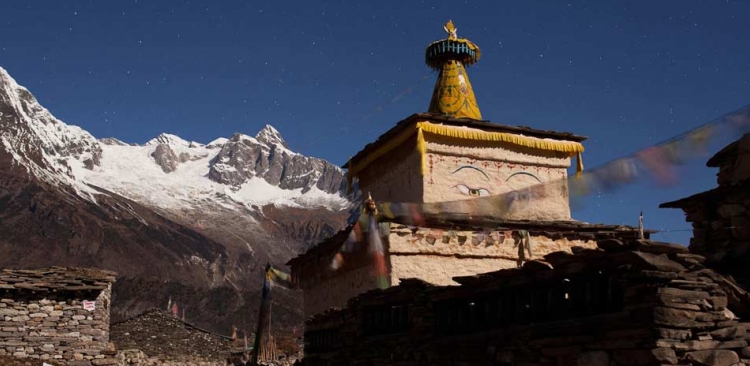Trekking in Nepal

Published Date :26 May, 2015
Trekking is no doubt the most preferred activity among tourists visiting Nepal. Nepal offers a variety of choices to would-be and experienced trekkers ranging from easy and short treks to the most scenic and physically demanding long trekking trips. Everest Base Camp trek is one of the world’s top ten trekking trails.
Trekking usually means walking at least 4-5 hours per day and reaching from one point to another. On the way trekkers revel and take pleasure in the scenery of mountains and nature and often walk through villages. Breakfast and lunch are often taken enroute.
Based on one’s choices trekking are of two types: independent and organized treks. It is possible to do both kinds of treks in Nepal, however in Tibet, only organized treks are allowed. Similarly treks can be done either by stopping over at lodges or so-called tea houses or camping for which all necessary supplies are usually carried along the trail.
The length of trekking varies from 2-3 days or short duration to 21-30 days depending upon the destination one is traveling to.
The perfect time for trekking in Nepal is during Spring (March-May) and Autumn (Sep-Nov). This is the time when the air is fresh and crisp, there are no rainfalls, the weather is fine and balmy and the snow capped Himalayas become distinctly visible. Moreover there are also the seasons when you will see flowers blooming forth, green trees and wildlife activity. Watching rhododendrons, Nepal’s national flower and orchids is a delight for any nature lovers.
However there are rain shadow regions in Nepal, called Trans Himalayan region, where it is only possible to trek during monsoon season since these places do not receive any rainfall. Places like Upper Mustang and Upper Dolpo fall in Trans Himalayan region. Trekking in this region is possible during summer (June-August).
The need for acclimatization becomes quite essential while trekking in higher altitudes. Most of the trekking routes in Nepal are above 3000m. Climbing quickly in these areas will have adverse effect on health. High Altitude Sickness or commonly called HAS is one of the most common effects suffered by trekkers when trekking in Nepal. Adequate drinking of water, slow and healthy walking, good diet and proper guidance by trekking guides are some of the precautionary measures required during acclimatization.
Types of Trekking in Nepal
There are two types of trekking popular in Nepal. Teahouse trek and camping trek.
Teahouse Trek: Tea house trek involves putting up in lodges and guesthouses overnight while trekking. Most of the popular trekking routes such as Annapurna, Langtang and Everest host numerous lodges and guesthouses where travelers can spend the night without the need to carry their own camping. Traditional and international meals are served in these lodges according to one’s choice. This arrangement also means that you don’t have to bring along porters or guides in many cases. Camping Trek: Camping trek is an arrangement whereby the trekkers will carry his camping equipment, food and sleeping bags along with him on the trekking trail. Porters and guides will be required to carry all the necessary equipments. Such kind of trek will have a whole trekking staff including cooks, sirdars, kitchen boys and porters. Instead of sleeping in guesthouses or lodges, trekkers will camp in open grounds, forests or by rivers. This kind of trekking are only possible in less visited and remote areas such as Manaslu, Kanchenjunga, Dolpa etc.
Related Blog(s)
- The updated air route | Lukla flights from Ramechhap
- Is Everest Base Camp trek worth it for the Monsoon season?
- Things to know about Everest Base Camp
- Top 7 best Trek in Nepal
- Everest Base Camp Trek
- KANGCHENJUNGA TREKKING, Nepal Tibet Trekking
- ANAPURNA CIRCUIT TREKKING, Nepal Tibet Trekking
- Trekking to Everest:
- Discount price for Trek tour
- Tibet Lasha Everest base camp tour
- Nepal trekking, Trekking in Nepal
- Annapurna Base Camp
- Mt Everest Base camp Trekking, Visit to the Sherpas, village






